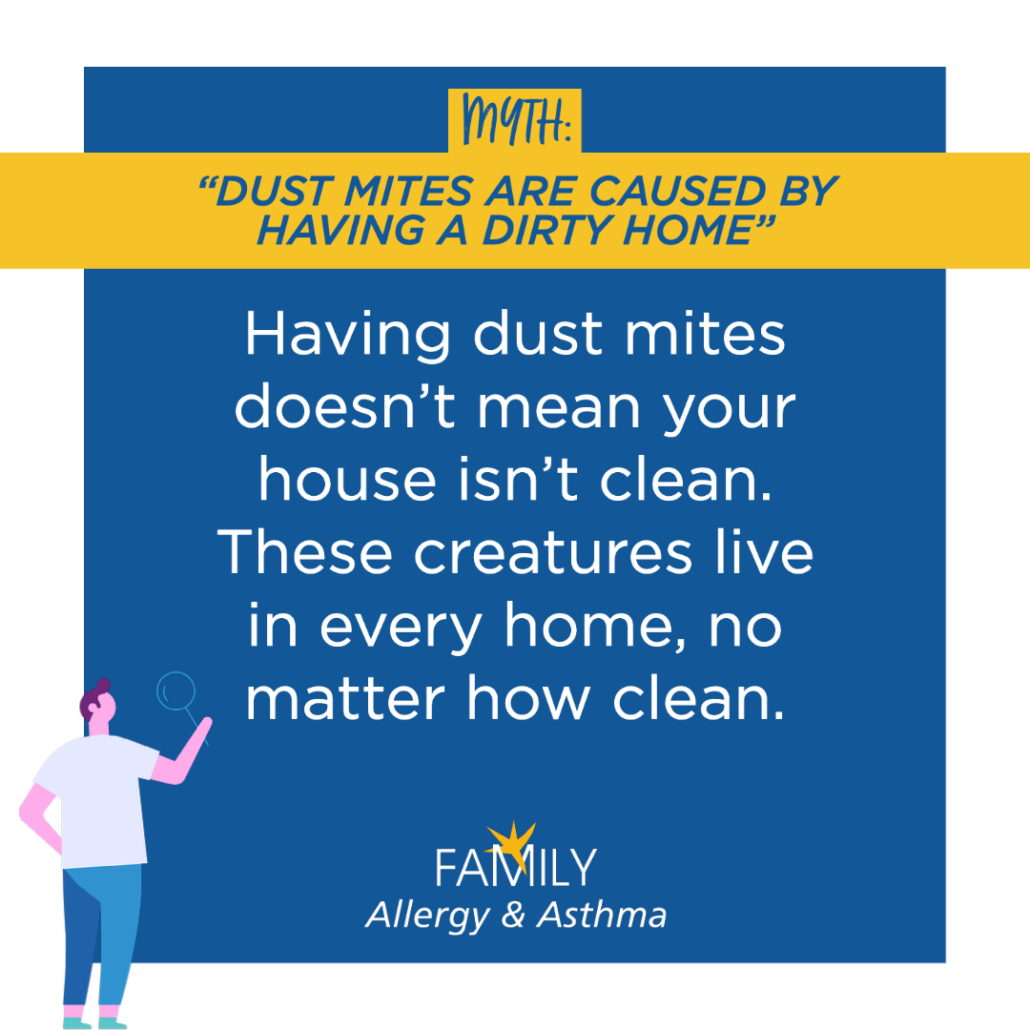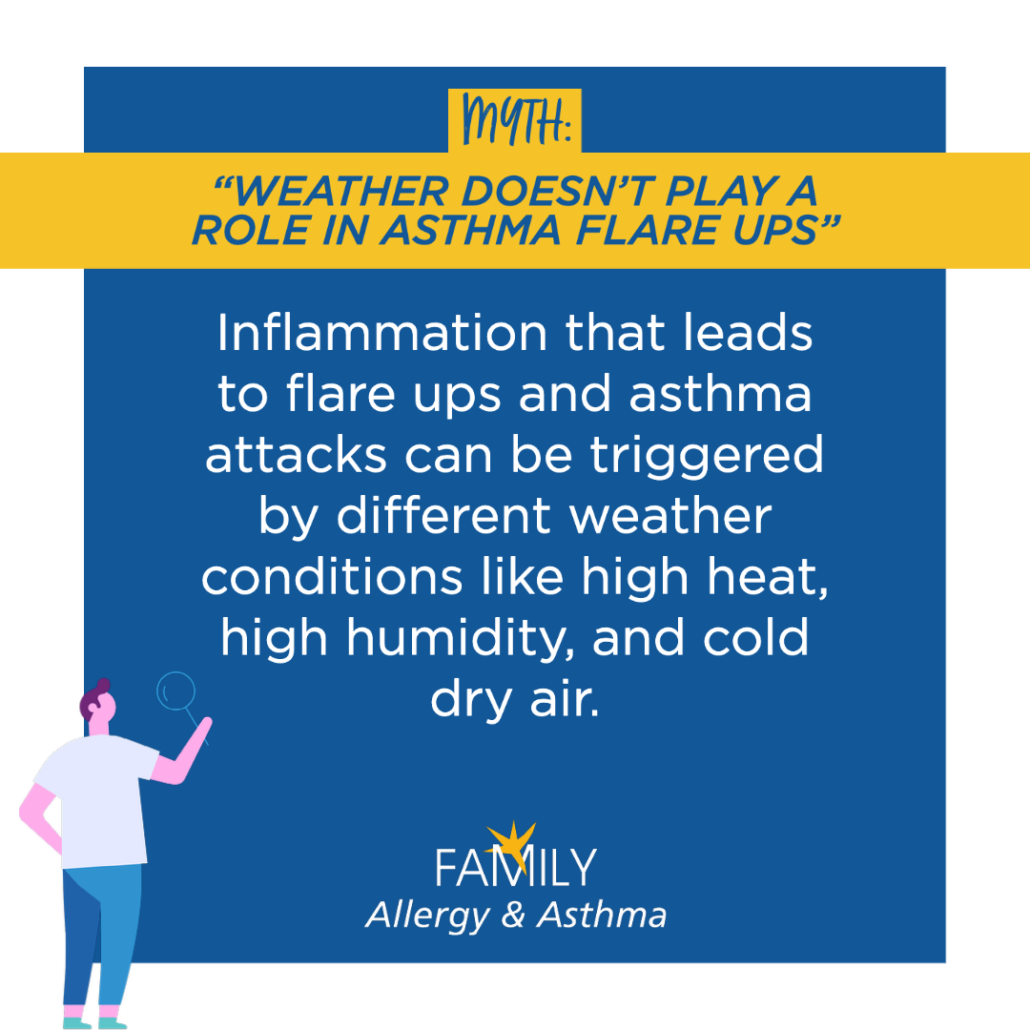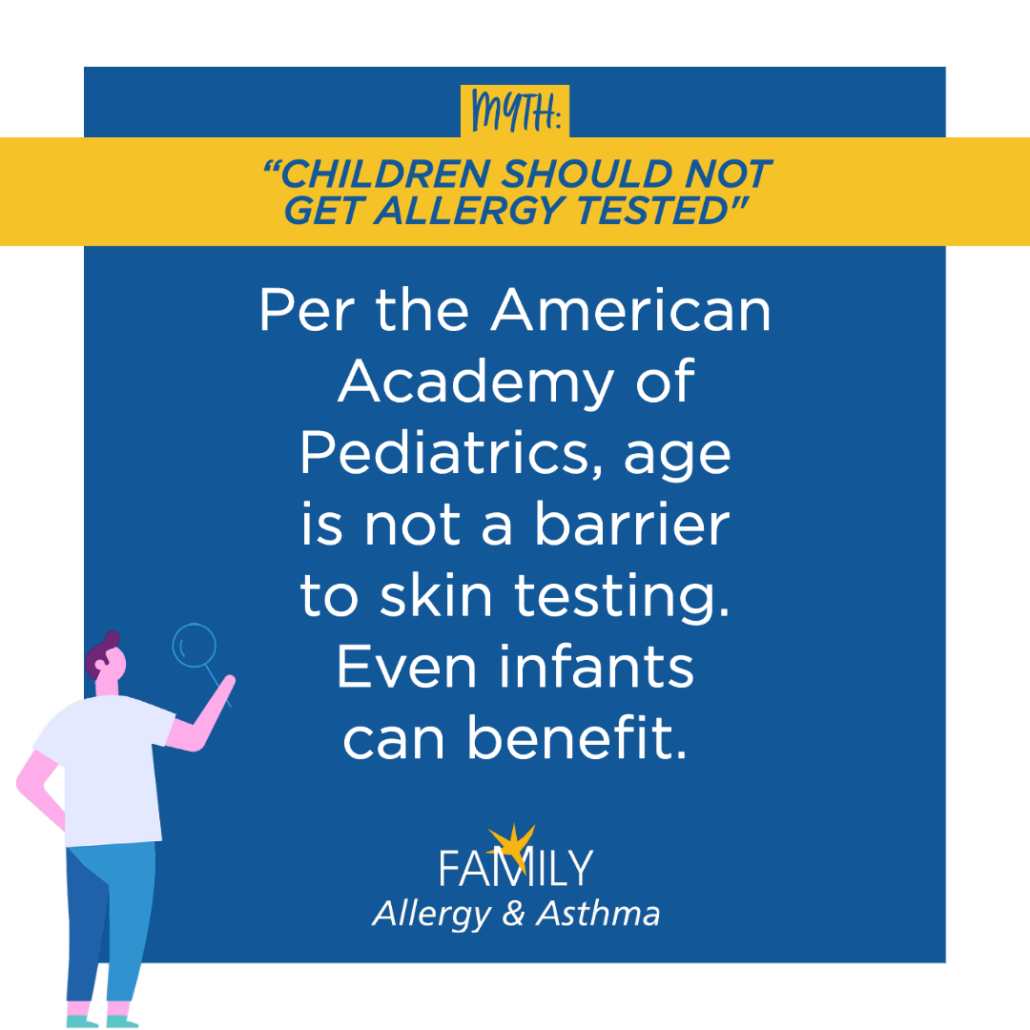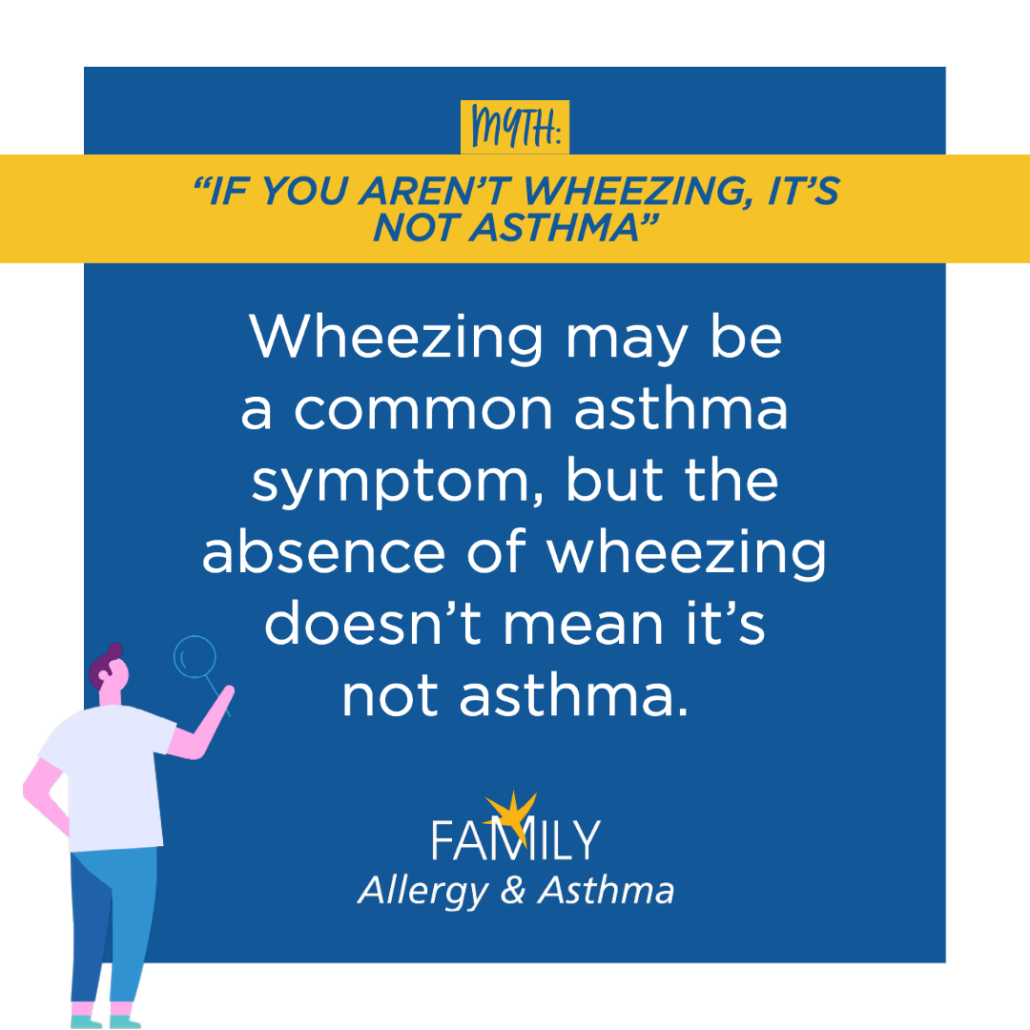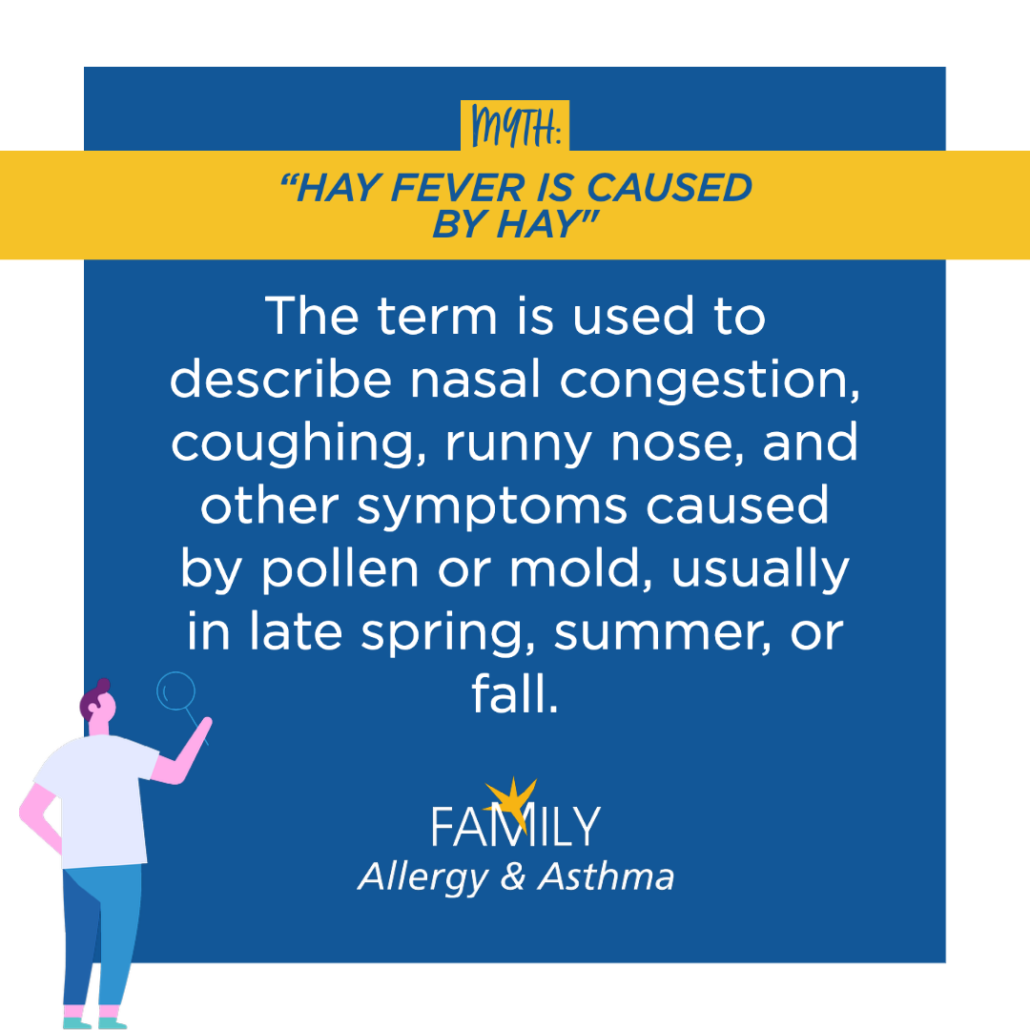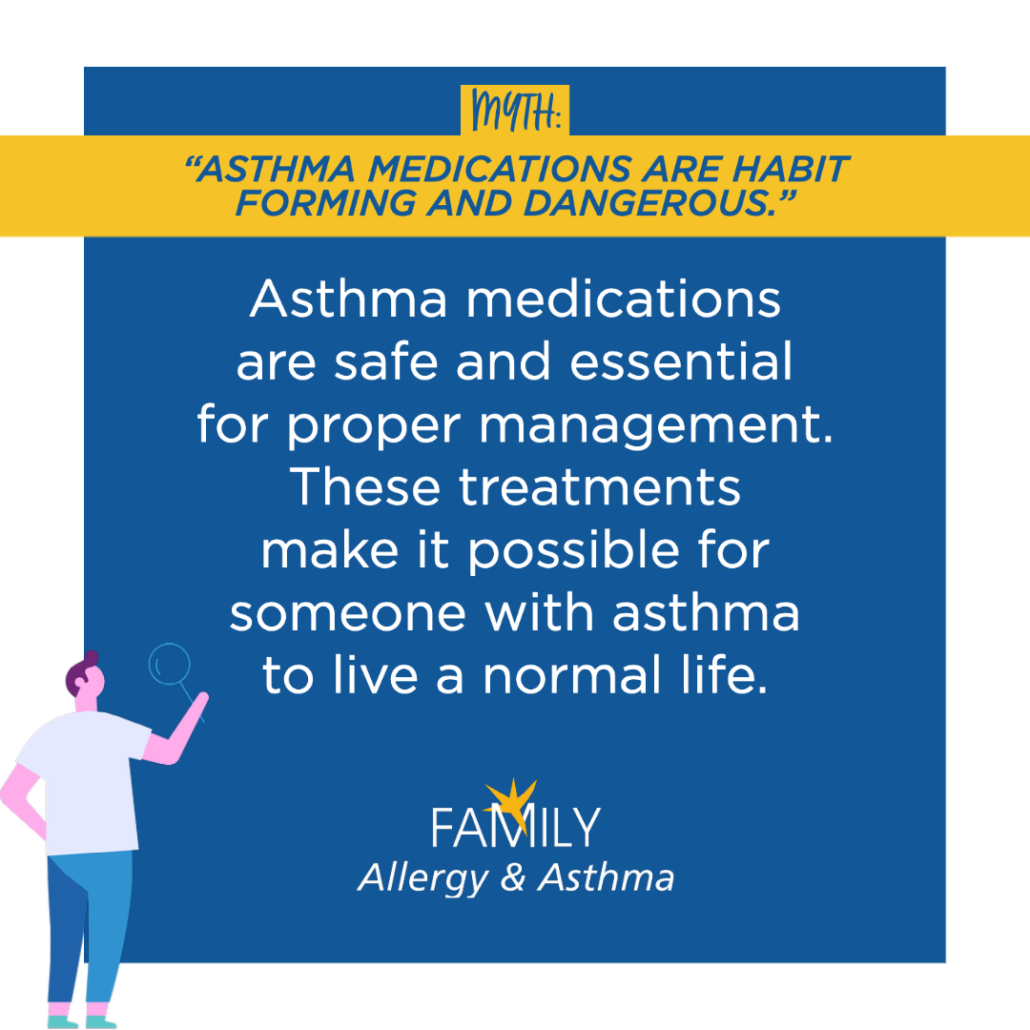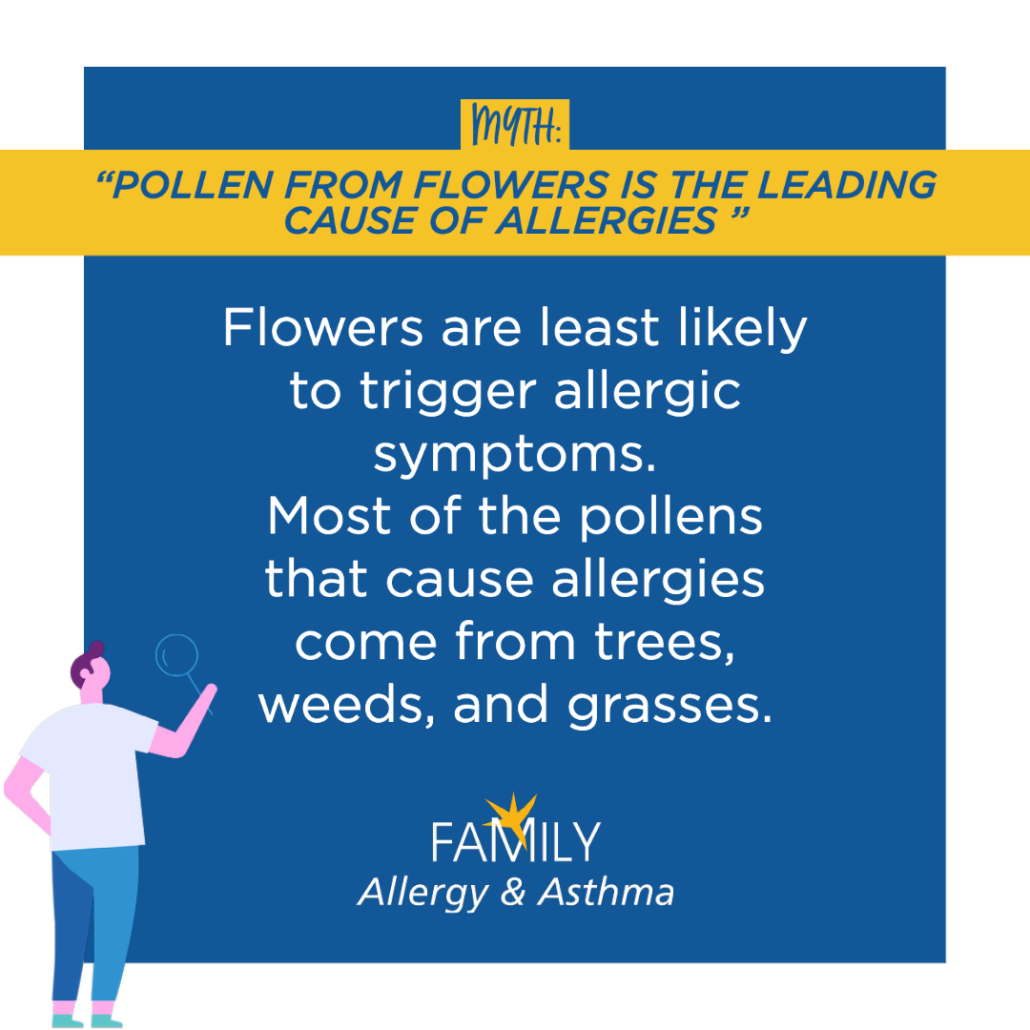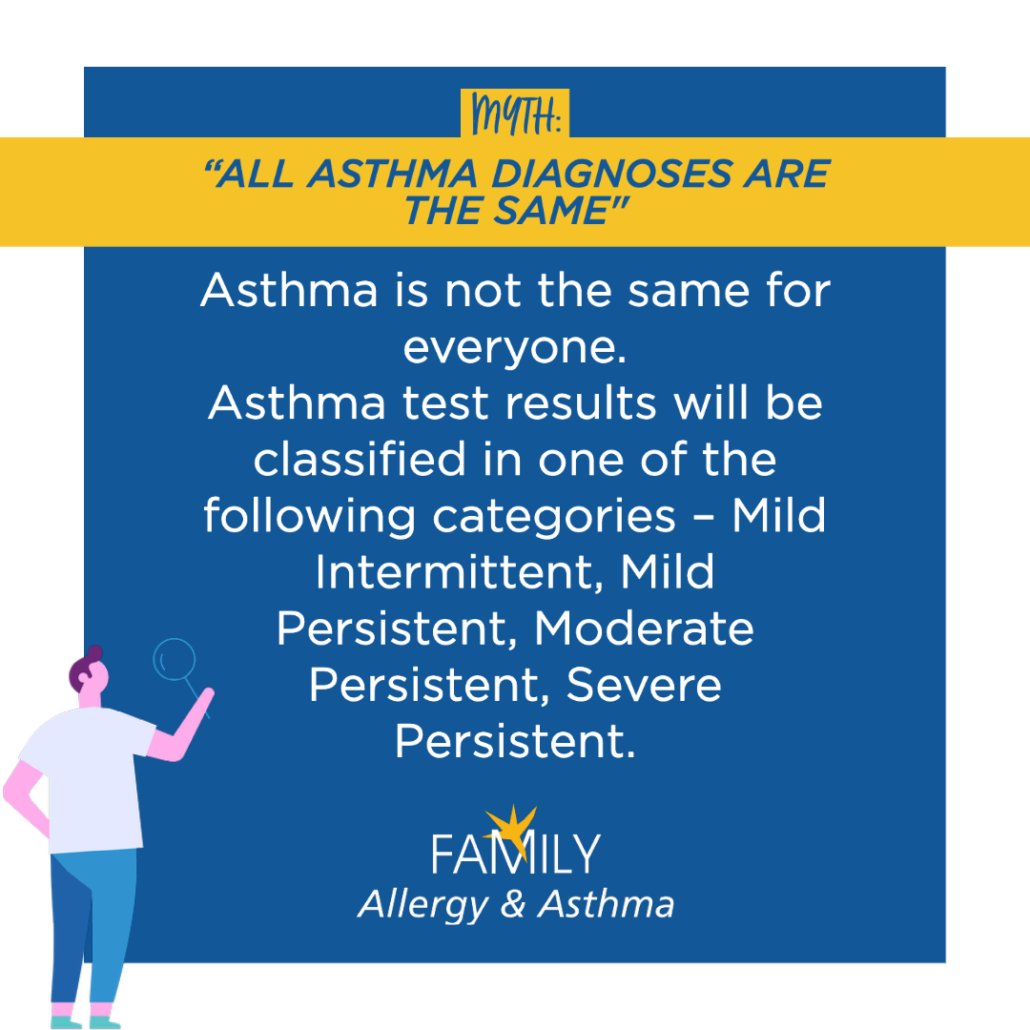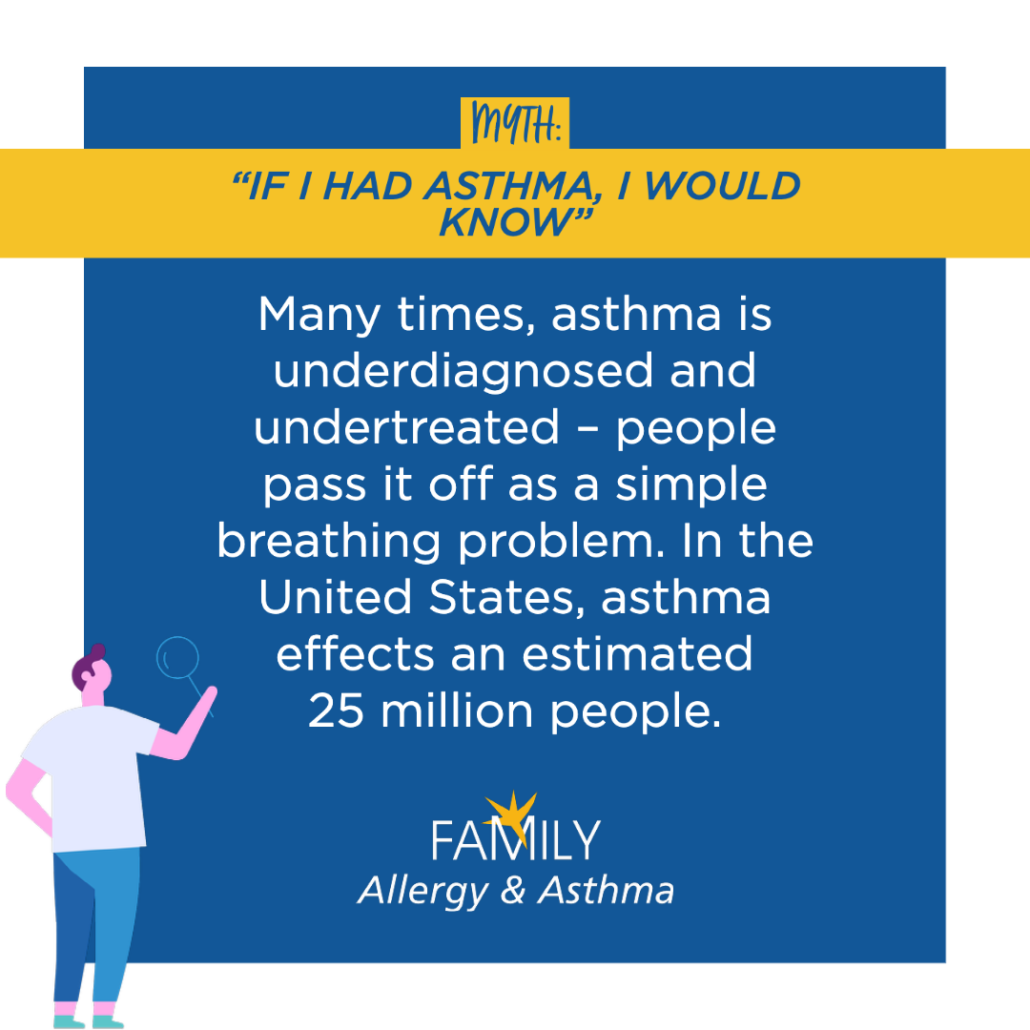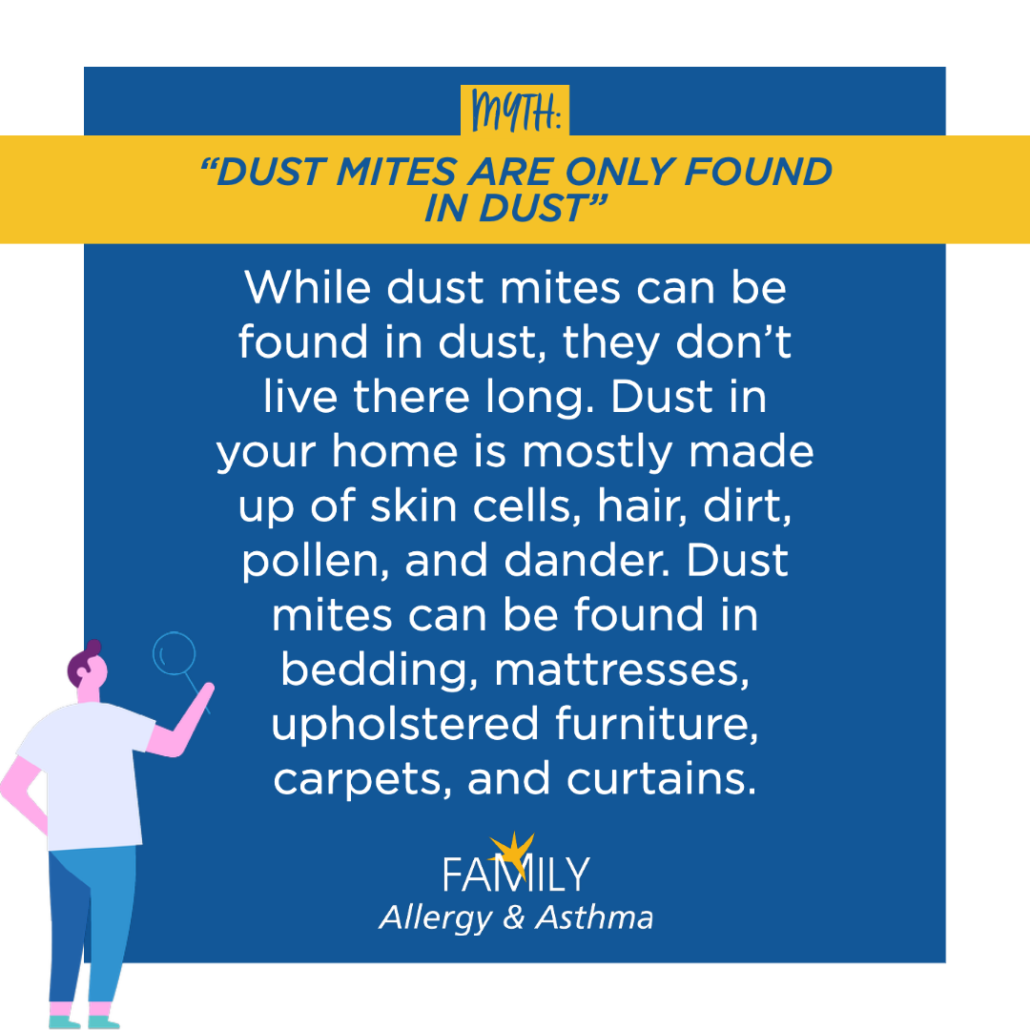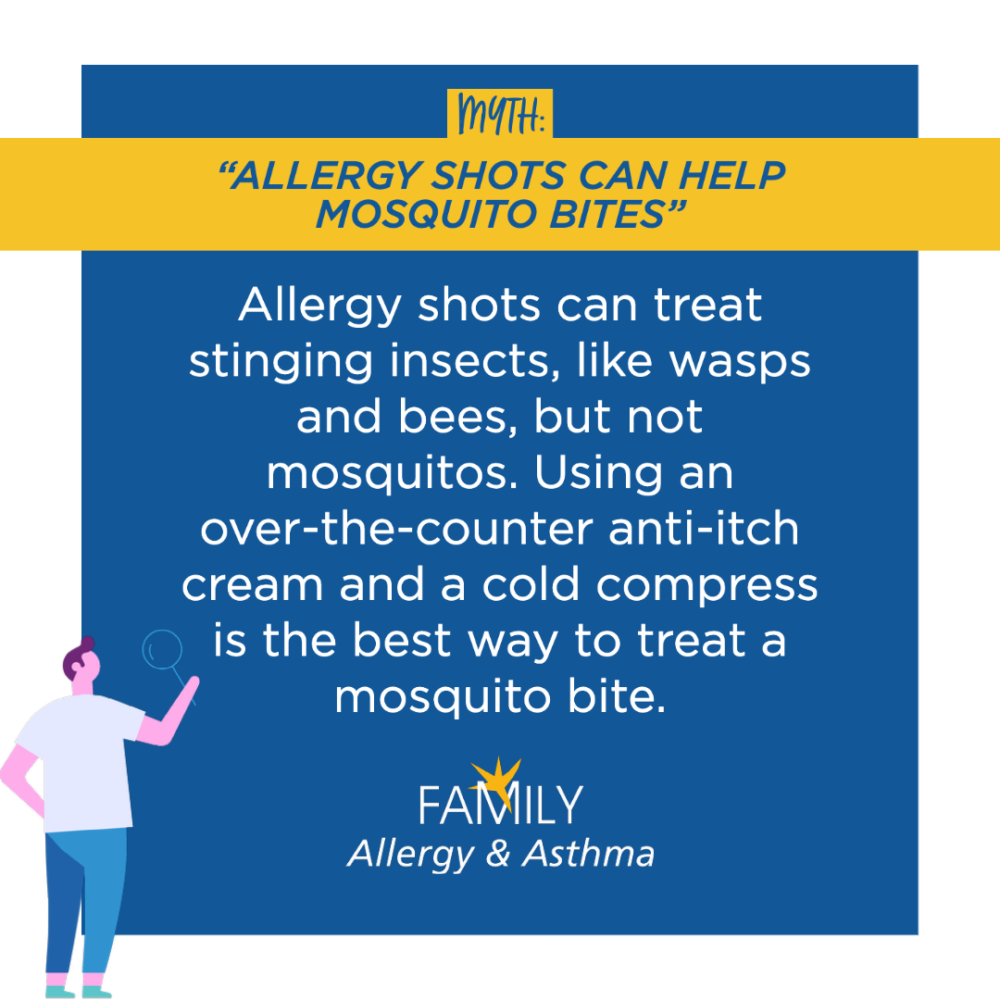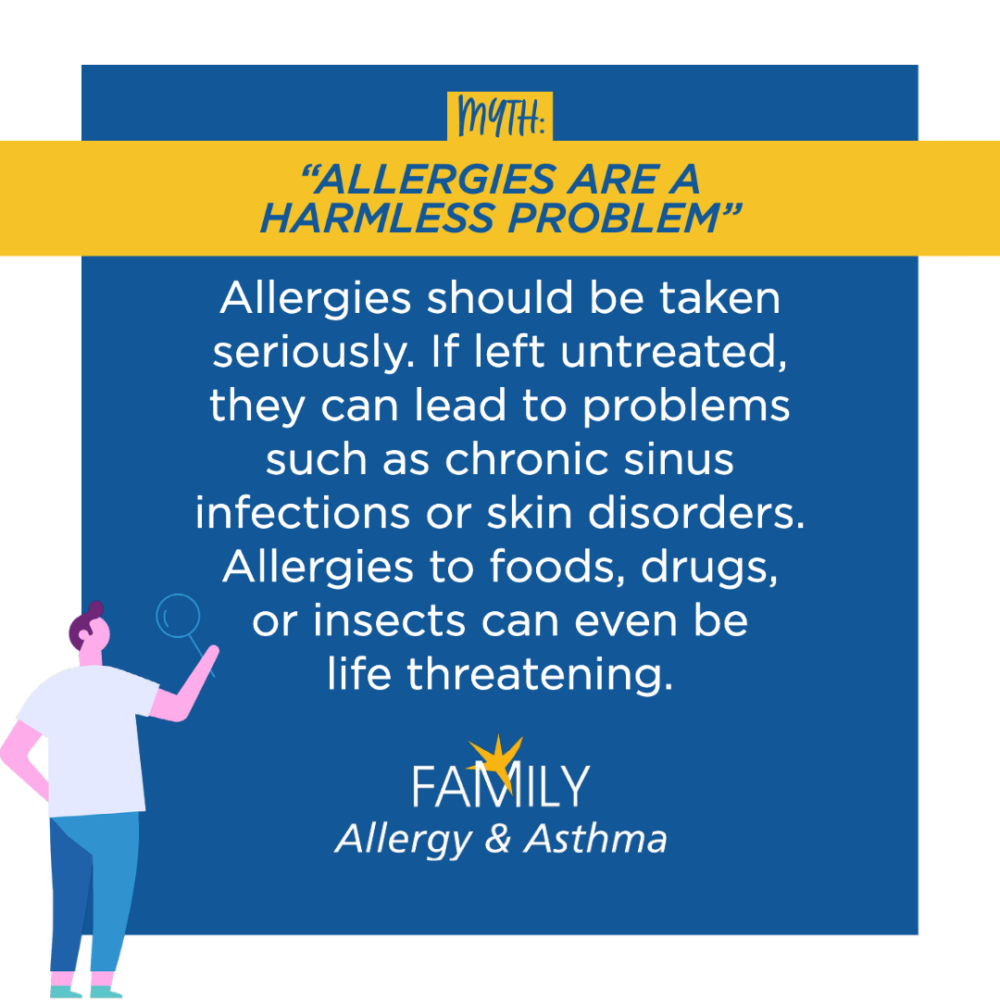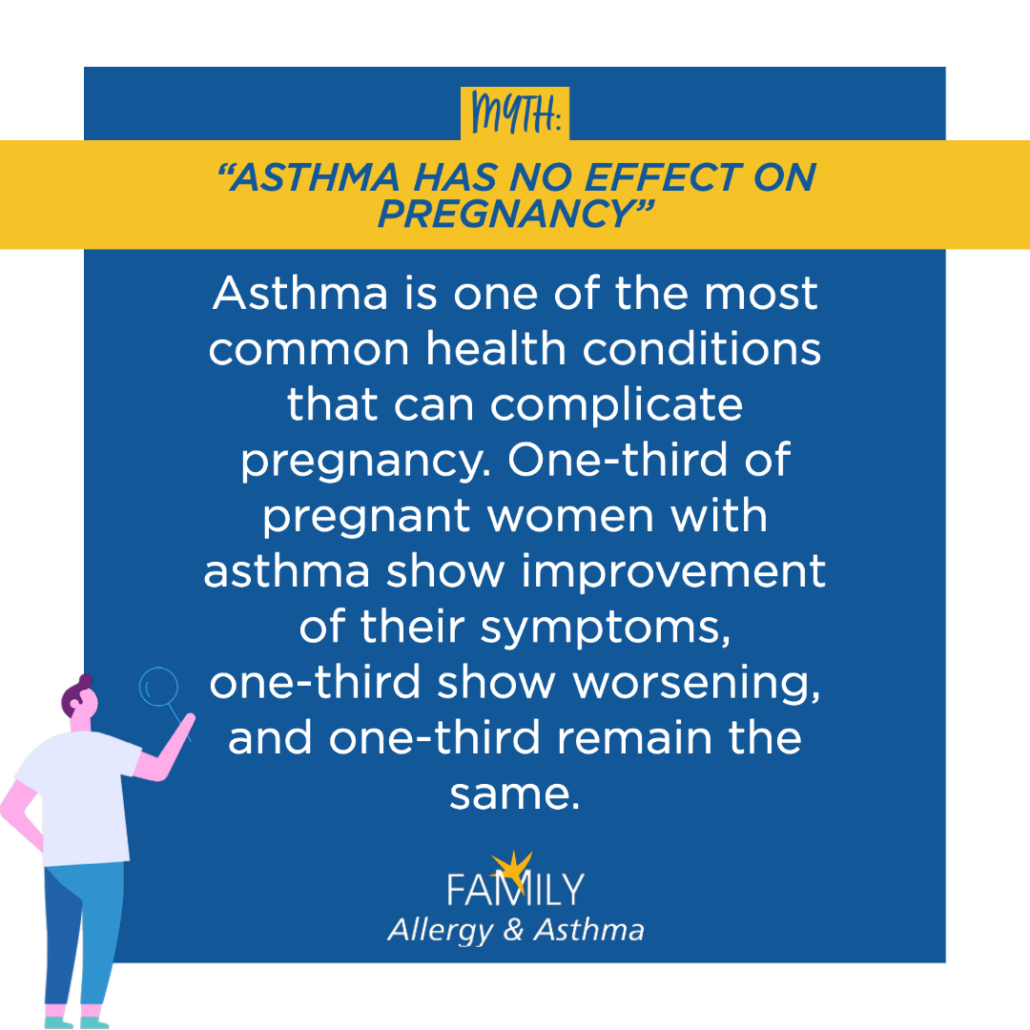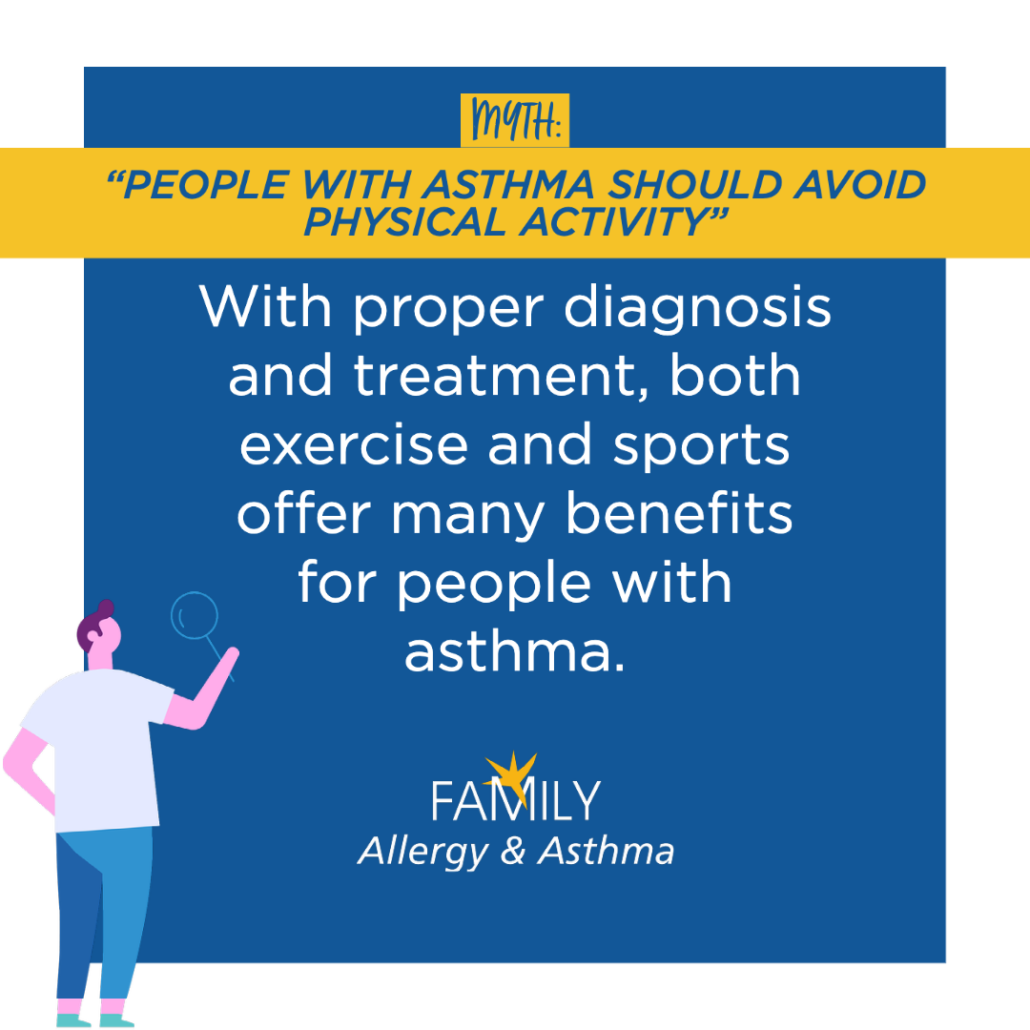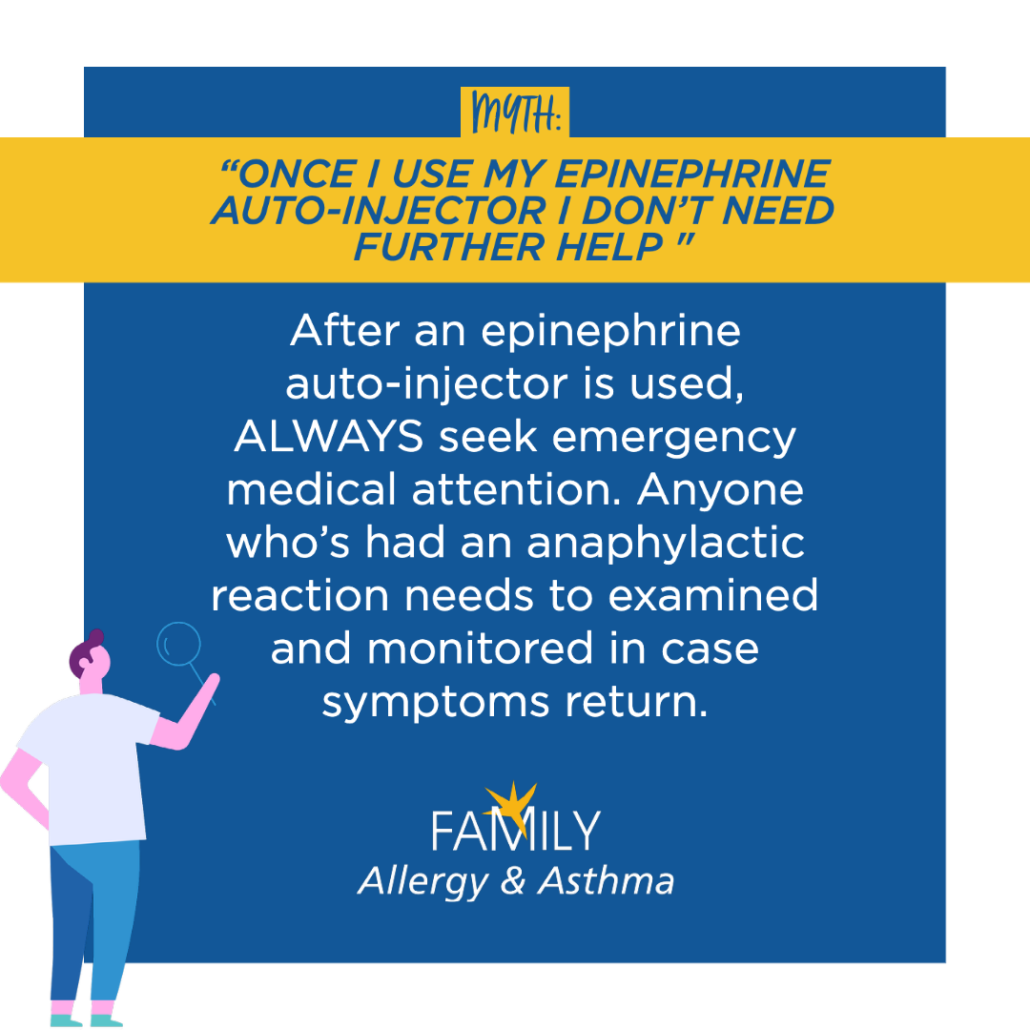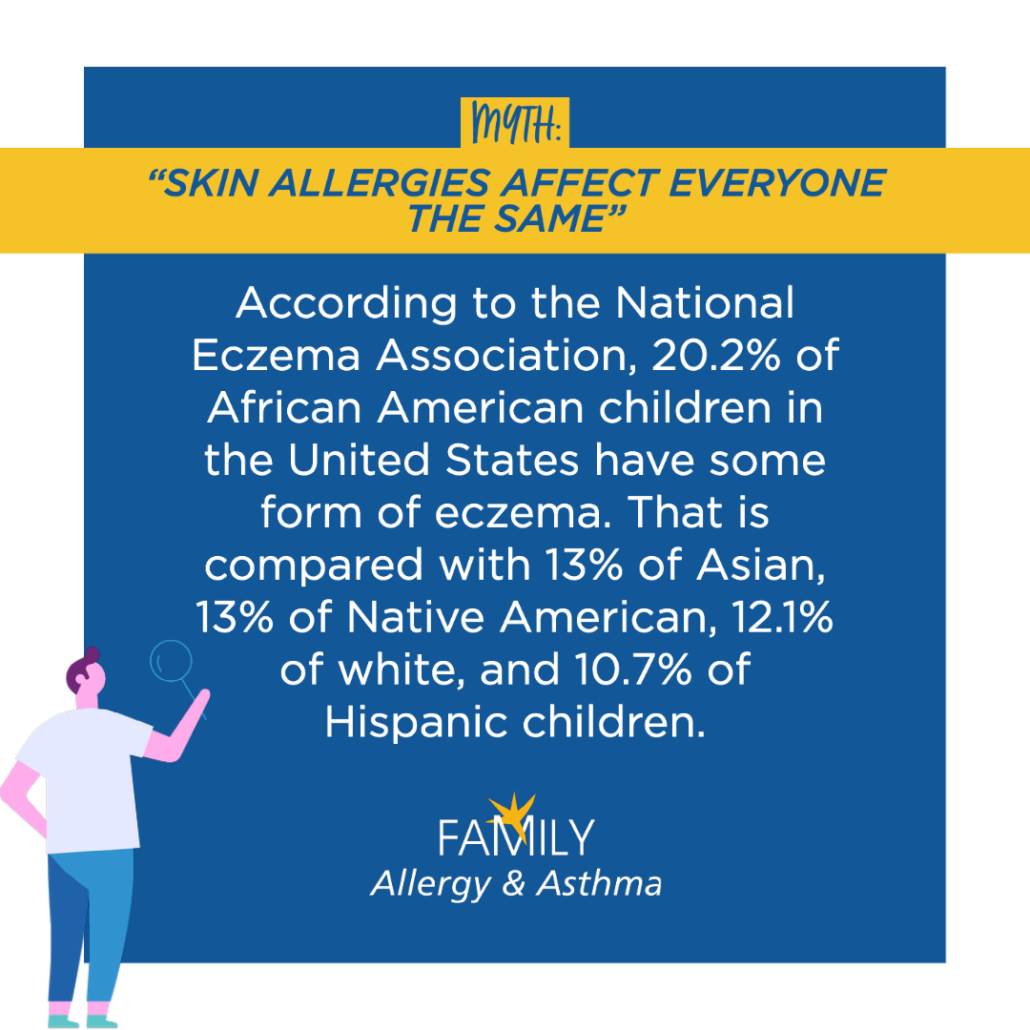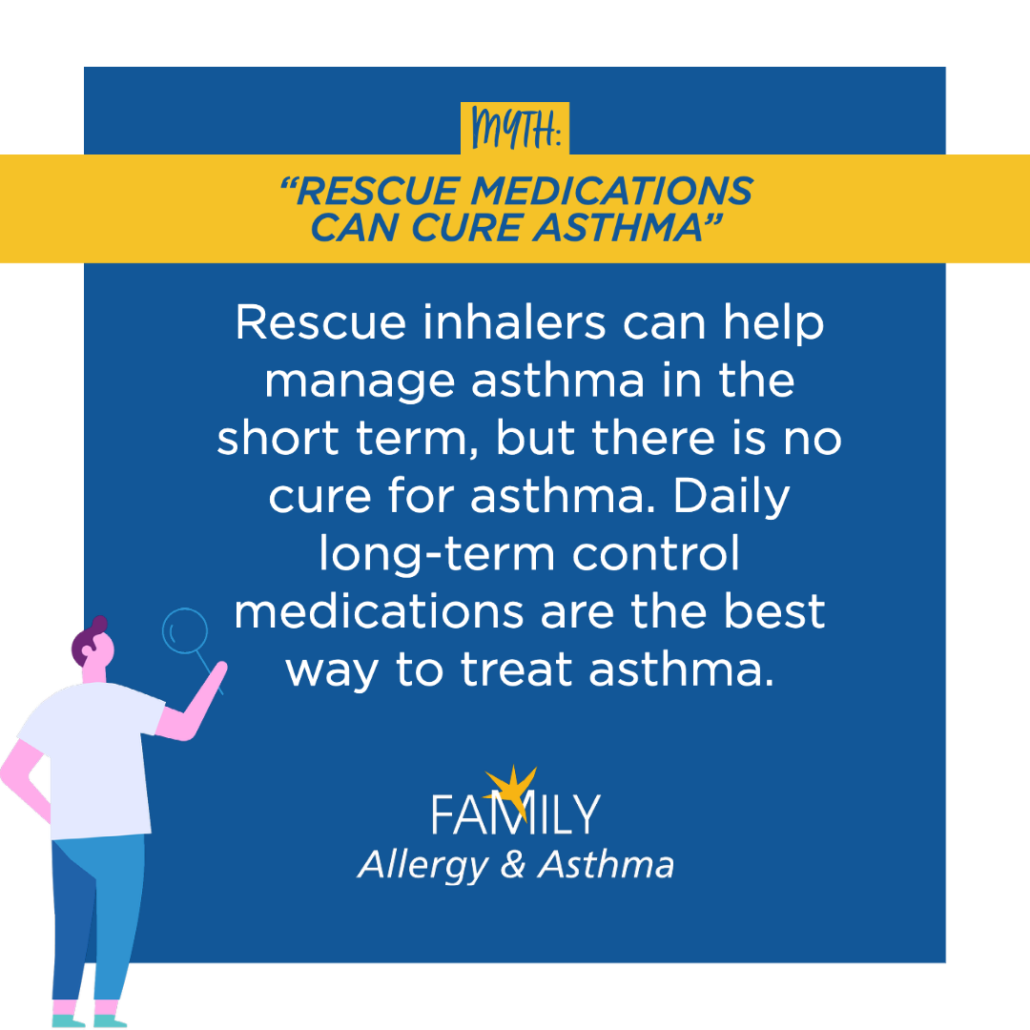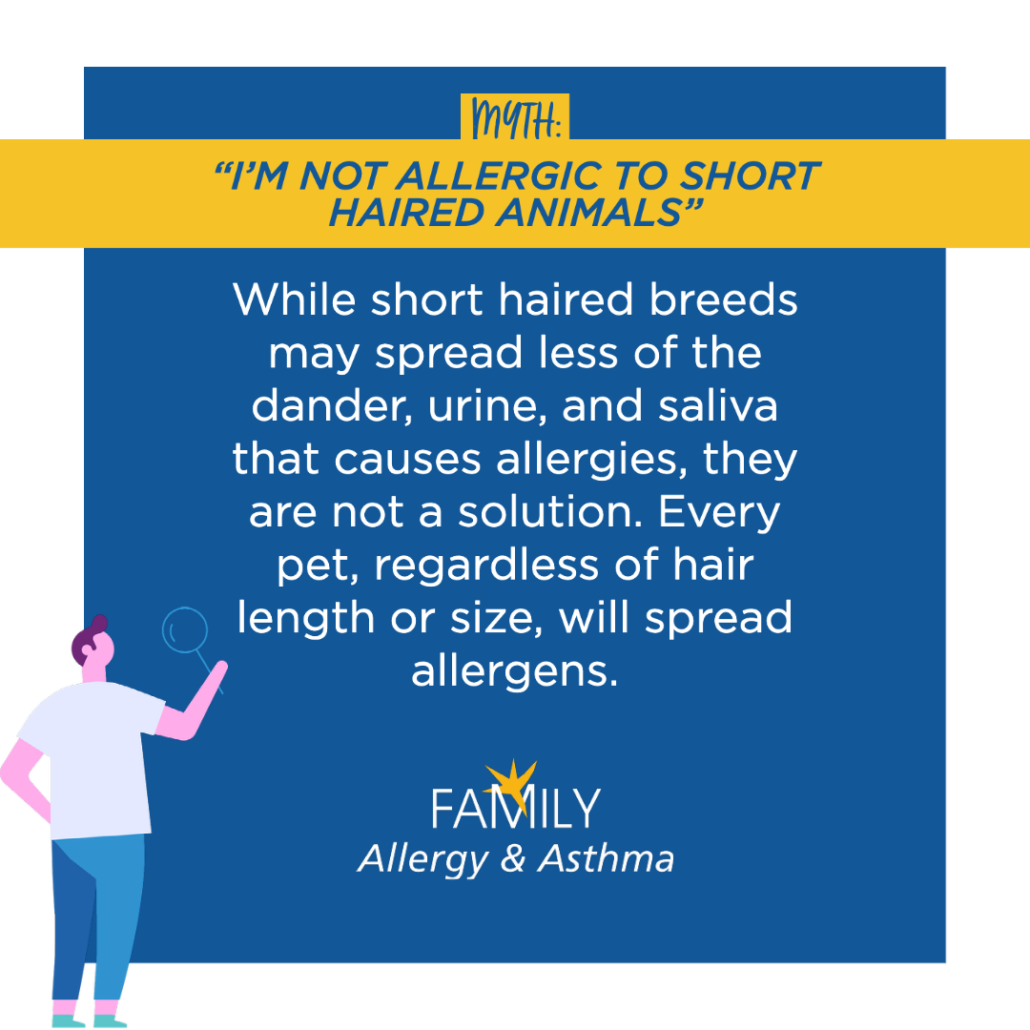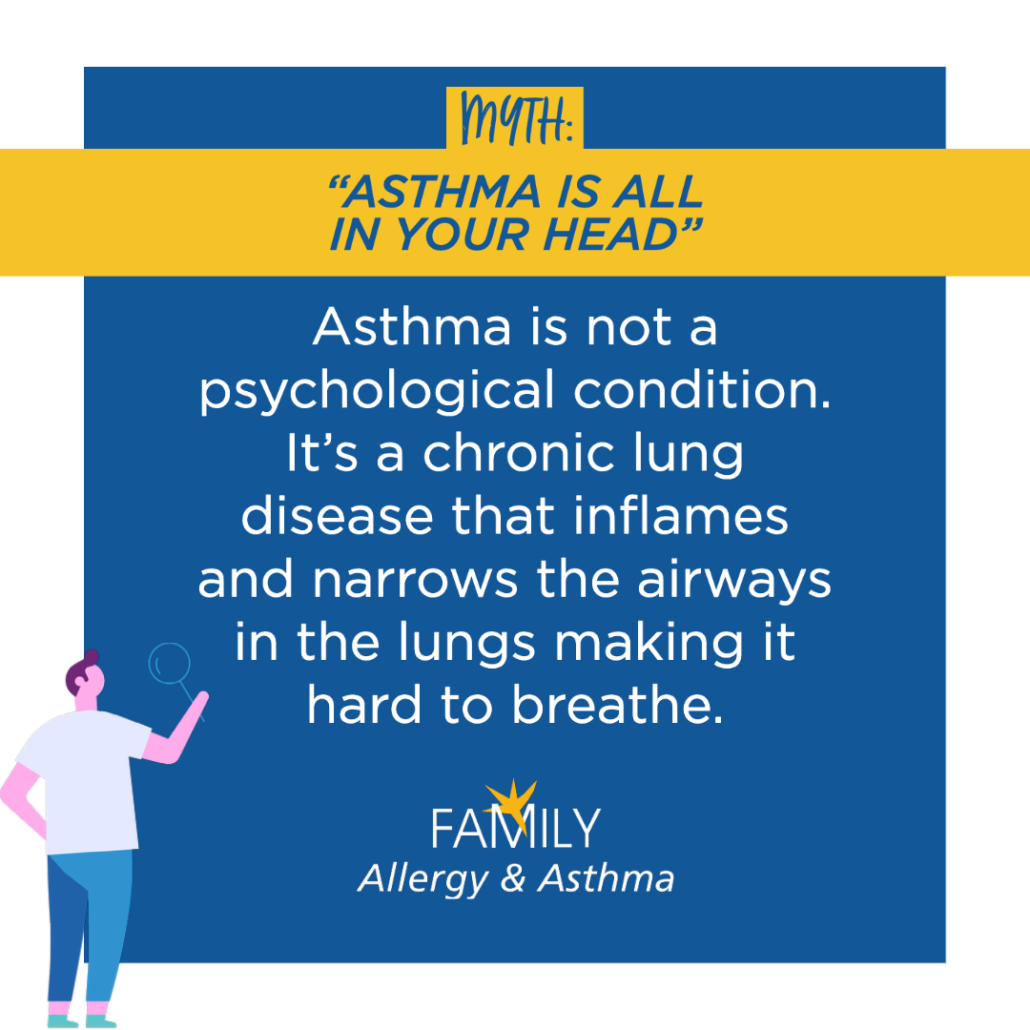25 Myths about Allergies and Asthma
There is a ton of information floating around in the world, and sometimes things stick that aren’t necessarily true. When it comes to medical conditions, these misconceptions can lead to patients waiting longer before seeking treatment, incorrectly diagnosing themselves, and using incorrect medications. To help you keep your facts straight, we’ve compiled a list of 25 common allergy and asthma myths!
1. Food allergies and food intolerance are the same
While some of the symptoms of food intolerance and food allergy are similar, the differences between the two are very important. Eating a food you are intolerant to can leave you feeling miserable. However, if you have a true food allergy, your body’s reaction to this food could be life-threatening. Food intolerance symptoms include gas, bloating, diarrhea, constipation, cramping, and nausea. Symptoms of food allergy include hives, swelling itching, anaphylaxis, and dizziness.
2. Dust mites are caused by having a dirty home
Two ways to prevent exposure to dust mites are to reduce humidity and block access to human skin. Using mattress or pillow covers can prevent dust mites from multiplying and keep them from irritating your skin and nasal passages. Washing your sheets regularly in warm water will also keep dust mite populations down.
3. Weather doesn’t play a role in asthma flare ups
Extreme weather can trigger asthma symptoms! Cold dry air, heat and humidity, and thunderstorms can irritate those with sensitive asthmatic airways. Along with weather, studies suggest that climate change can also cause asthma flare ups.
4. Children should not get allergy tested
Skin testing is safe for individuals of all ages! At Family Allergy & Asthma we test for allergens like mold, pollen, dust mite, and pet dander. We also offer special allergy testing for penicillin, stinging insects, and certain foods. For children, it’s especially helpful to get tested young so parents know which allergens could trigger a reaction. As a child ages and their immune system develops, they should be retested to identify any changes.
5. If you aren’t wheezing, it’s not asthma
Wheezing or the lack thereof isn’t the only indicator for asthma. While wheezing is common, there are a slew of other symptoms to look out for as well. These symptoms include coughing, especially at night, with exercise or when laughing, trouble breathing and a tight feeling in the chest. If you suspect that you or your child may have asthma, the best course of action is to get tested as soon as possible. Asthma is a lifelong condition but with the correct diagnosis and treatment, it’s extremely manageable.
6. Hay fever is caused by hay
Despite its name, hay fever is not directly caused by hay. The medical term for hay fever is allergic rhinitis, more commonly known as allergies. Allergic rhinitis typically occurs when you breathe in something you’re allergic to like pollen or dust. The allergens then trigger the body’s immune response causing symptoms like runny nose, itchy water eyes, sneezing, and congestion.
7. Asthma medications are habit forming and dangerous
Asthma control medications that are prescribed by a doctor are very safe and effective. These treatments are essential in helping patients manage their asthma symptoms and flare ups. Common asthma medications include inhaled corticosteroids, immunotherapy, and biologics.
8. Pollen from flowers is the leading cause of allergies
It’s a common misconception that flowers are one of the main causes of seasonal allergies. While flowers do contain pollen, it’s not as easily spread by the wind. Flower pollen is bigger and heavier making it less likely to be spread around. The main allergy offenders are tree, grass, and weed pollens because they’re fine and powdery and can be easily carried by the wind. Once pollen is in the air, it’s hard to avoid and easy to inhale, which causes irritating seasonal allergy symptoms.
9. All asthma diagnoses are the same
Since all asthma diagnoses differ from person to person, categorizing severity is important for treatment. At Family Allergy & Asthma we will complete pulmonary function testing to determine which category is most appropriate. Along with a diagnosis, our board-certified allergist will also create an individualized treatment plan designed to keep asthma symptoms under control.
10. If I had asthma I would know
While millions of Americans have asthma, there are many who pass off symptoms as mere breathing problems. Some commonly dismissed symptoms are shortness of breath during or after exercise or activity, nighttime coughing, and chest tightness.
11. Dust mites are only found in dust
Dust mites are one of the most common triggers of year-round allergies and asthma. They are too small to see with your eyes alone, but they look like white bugs under a microscope. These bugs live and thrive on soft surfaces in your home, like mattresses, and their waste can trigger allergy and asthma symptoms.
12. Allergy shots can help mosquito bites
It’s a common misconception that allergy shots can help mosquito bites but unfortunately that’s not the case. Allergy shots can be very effective in treating allergies to stinging insects like wasps, bees, and hornets but not mosquitos.
13. Children will outgrow their asthma
Some people think children outgrow asthma because their symptoms can decrease as teens, but symptoms often reappear later in life. Asthma is a lifelong disease and should be taken seriously even if flare ups decrease. At Family Allergy & Asthma believe that asthma should not limit children in anyway. Properly controlled asthma will allow them to play sports, sleep well, avoid missing school, and breathe easily!
14. Allergies are a harmless problem
While allergies typically occur because of our body’s reaction to a usually harmless substance, they still need to be taken seriously. Allergies to pollen and dander can lessen a person’s quality of life by making them feel sick, tired, and irritable. In addition, some food and insect allergies can cause anaphylaxis, which is life threatening.
15. Asthma has no effect on pregnancy
According to the National Institute of Health, women whose asthma becomes worse during pregnancy usually see a peak in severity in the second trimester, with symptoms becoming less severe in the final four weeks. The change in asthma severity during pregnancy is usually temporary; after delivery, most women’s asthma symptoms go back to where they were before they were pregnant.
16. People with asthma should avoid physical activity
The truth is that being active and playing sports can help strengthen breathing muscles. Strengthening those muscles allows the lungs to work better which can ultimately help with breathing. Through proper diagnosis and effective treatment, asthma shouldn’t hinder physical activity.
17. Taking bee pollen can treat seasonal pollen allergies
While bee pollen contains many nutrients, it is NOT an approved treatment for allergies. The research on bee pollen in humans is still on going and as of right now, there isn’t any to support the claim that it helps with allergies. In fact, there have been studies that show bee pollen can actually trigger an allergic reaction!
18. Eating a little bit of the food I’m allergic to won’t hurt
The most effective way to avoid an allergic reaction to food is through avoidance. Even eating a small amount of food containing an allergen can trigger anaphylaxis, which can be deadly. Make sure you are aware of your food allergens, and that you ask questions when it comes to food you did not prepare. Also, be sure to keep your epinephrine auto-injector with you, just in case of an emergency!
19. Once I use my epinephrine auto-injector I don’t need further help
Epinephrine is used to stop the progression of anaphylaxis. While a person’s symptoms may appear to get better after the shot has been administered, an emergency medical professional still needs to examine them. The auto-injector generally contains one dose of epinephrine and if symptoms return, other emergency treatments may be required.
20. Skin allergies affect everyone the same
While eczema occurs in all races and ethnicities, African Americans are affected the most. Even though the black community is more affected, it is often misdiagnosed due to its unique appearance in skin of color. Some common symptoms include dry and scaly skin, thickened skin, or ashy skin.
Learn more by visiting Eczema in Skin of Color.
21. There are no significant difference in asthma based on race or ethnicity
Health disparities affect one group of people differently than another group. They exist based on factors such as race, ethnicity, age, sex, geography, and disability.
To learn more about health disparities and how to change them, visit aafa.org/asthmadisparities.
22. Rescue medications can cure asthma
There are multiple treatments for asthma, but to find out which one is best for you, you must talk to a doctor. Our board-certified allergists can create an asthma management plan tailored to you. The plan can include instructions on preventative maintenance medication, quick relief medication, and other treatment like oral steroids or immunotherapy.
23. I’m not allergic to short haired animals
An animal’s fur doesn’t have a lot to do with how allergic or nonallergic someone is. People are not allergic to an animal’s hair but to an allergen found in the saliva, dander, or urine of an animal with fur. Long haired breeds might produce more hair but allergens from the animal will escape into the air and onto surfaces no matter what. Allergy shots have been shown to help with pet allergy symptoms.
24. Antihistamines can stop anaphylaxis
Anaphylaxis is a life-threatening allergic reaction and must be treated immediately with epinephrine. The injection of epinephrine should be given in the outer thigh and can usually be given through clothing, but you should always check your device’s instructions for details. Antihistamines are recommended for treatment of mild and moderate allergic reactions only.
25. Asthma is all in your head
In the United States, asthma affects an estimated 26 million people. This disease is something asthmatic patients must treat, live with, and think about every day. While asthma itself isn’t only phycological, it can cause mental distress. It is not uncommon for people with chronic illness to develop feelings of depression, anxiety, or panic disorder. That’s why it’s important to take asthma seriously and check in on your asthmatic loved one!
At Family Allergy & Asthma, our team of board-certified allergists are here to help. We want to be a champion for our patients and a partner in care. From allergies to asthma, we’re here for you every step of the way.
To learn more about allergies and asthma visit our education page and social media channels.
To schedule an appointment, call 800.999.1249 or request one online.


